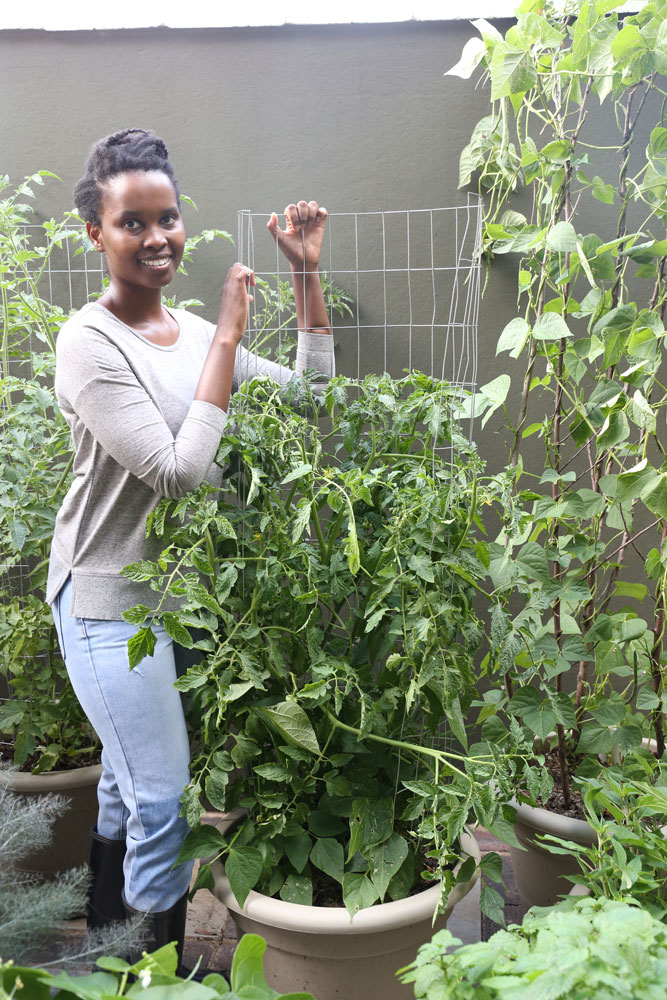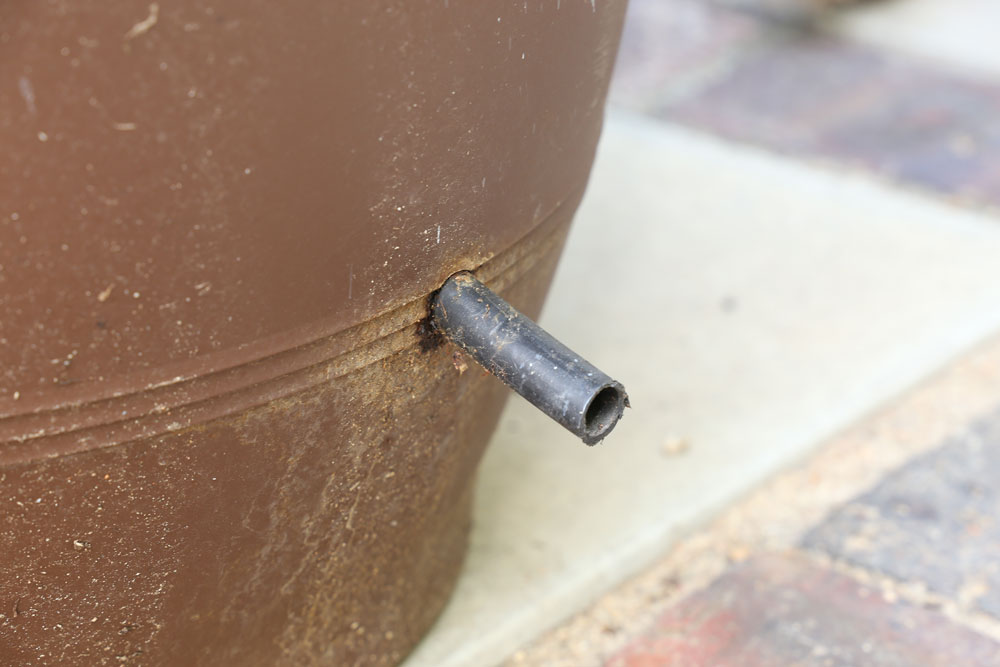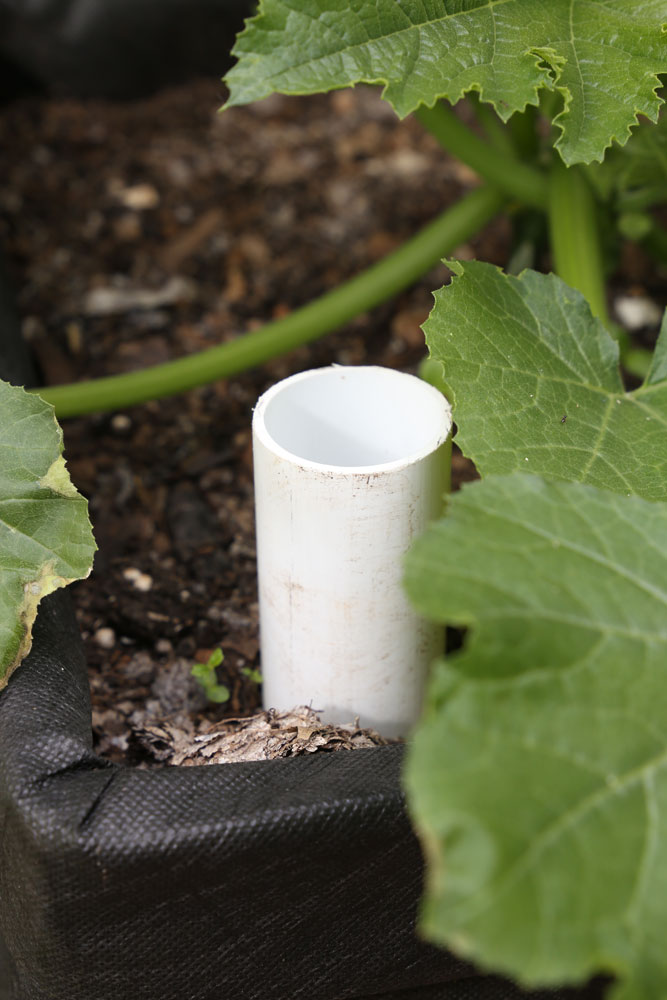When Joy Phala became a full-time mom, she got her cooking inspiration from shows like MasterChef. Finding that many ingredients were too expensive or unavailable, she decided to grow her own and because she lives in an apartment, self-watering containers were the only option.
Joy came up with the idea of self-watering containers systems that work on the principle of subirrigation. A reservoir is constructed inside the base of the container and the reserved water is transferred by osmosis to the plants’ roots, providing consistent moisture. “Unlike the drench-and-drain method, subirrigated containers prevent water run-off. As the reservoir isn’t exposed, evaporation is minimised.” These containers use 60% less water, and the soil remains moist,” says Joy.
READ MORE: 46 Water-wise plants for you garden
What you’ll need
- 15cm long overflow pipe to prevent waterlogging
- Plastic bottles to fill the reservoir inside the bottom of the pot below the overflow pipe
- Shade cloth or weed guard
- 4cm diameter watering pipe
READ MORE: DIY Clay pot irrigation system
Joy’s Step-by-step guide
- Seal the holes in the bottom of the container. It needs to be watertight.
- To prevent waterlogging, the container needs an overflow pipe.
- Drill a hole in the side of the container, just above where the reservoir will be. Insert a 15cm long piece of tubing into the hole, so 7,5cm is inside and 7,5cm sticks out the side of the pot.

- To make the reservoir, drill small holes all over a couple of plastic bottles (the number will depend on the size of the pot), and place horizontally in the bottom of the whole container to about a quarter of the depth.
- Cover the bottles with a layer of shade cloth or weed guard, cut to fit the diameter of the pot so that it overlaps, tucking it down the sides preventing soil from seeping into the reservoir.
- Make a hole in the fabric and vertically insert a 4cm diameter pipe long enough to reach just above the surface of the soil. This is used to fill the reservoir. To prevent mosquitoes breeding, Joy recommends closing the top of the pipe with fabric when not watering.

- Fill the container with a good quality container mix. Joy uses a combination of potting soil and compost, with slow-release organic fertiliser.
- Plant the seeds or seedlings and fill the reservoir with water. The first time you fill it, it will empty quite quickly as the moisture is transferred to the soil. Fill the reservoir whenever the soil starts drying out. You’ll soon get a feel for how often you need to do this.
READ MORE: Easy DIY bucket watering system
For more from Joy, visit okitchengardens.com

